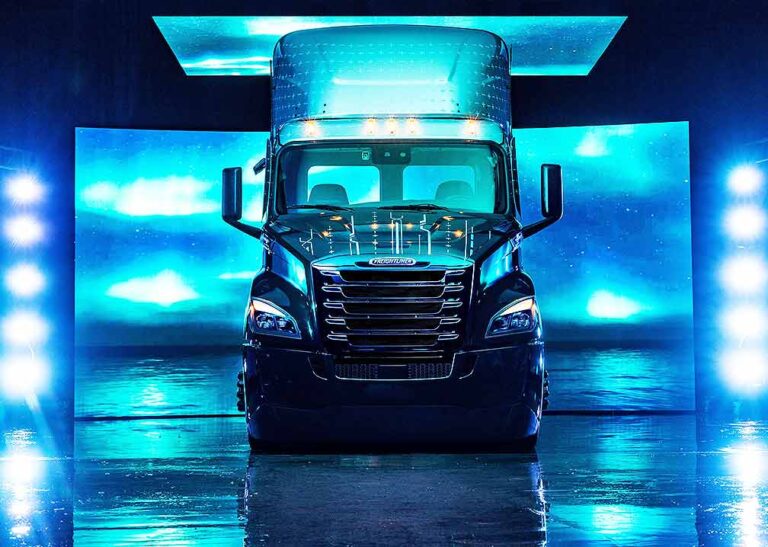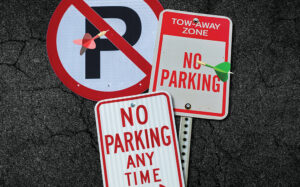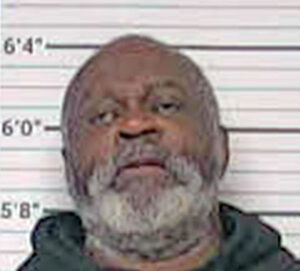PORTLAND, Ore. – Freightliner Trucks, a division of Daimler Truck North America LLC, (DTNA) unveiled the production version of its Class 8 eCascadia Monday at the ACT Expo in Long Beach, California.
Built on a heavy-duty truck platform in North America, the new battery-electric Freightliner eCascadia is a zero-emission version of the Cascadia.
The company said that “extensive development and rigorous testing through several prototypes and customer-tested trucks, resulted in a powerful and efficient battery-electric truck with multiple battery and drive axle options, providing a typical range of 230 miles (depending on vehicle configurations).”
The eCascadia will be used primarily for short-haul routes that allow for depot-based charging, examples of which include last-mile logistics, local and regional distribution, drayage and warehouse to warehouse applications, according to the company.
TRUCK FEATURES
- 320-470 hp
- Typical range of 230 miles (depending on vehicle configurations)
- Multiple battery options and maximum capacity of almost 440 kWh2
- Recharge of 80 percent in approximately 90 minutes
- Up to 82,000 lbs max GCW (Gross Combination Weight)
- Available with single or tandem eAxle
- 116-inch day cab configuration
John O’Leary, president and CEO of DTNA, said that “the introduction of zero-emission trucks and all their needed support systems is truly a game changer. By developing electric vehicles, investing in charging infrastructure, and offering eConsulting services, we are determined to do our part to make commercial transportation emission-free.”
There are several companies whose fleets will include the new electric tractor.
Paul Rosa, senior vice president of procurement and fleet planning at Penske Truck Leasing, said, “We remain committed to being at the forefront of the electric vehicle movement and the eCascadia has been a terrific option for our customers ready to incorporate EVs into their fleets. We look forward to continuing to work with Daimler Truck to help our customers meet their sustainability goals now and in the future.”
At Schneider, Rob Reich, executive vice president and chief administrative officer, said that “all of our drivers who tested the eCascadia thoroughly enjoyed the experience. We see great value in adding electric trucks to our fleet and are excited about taking the next step with DTNA.”
Read more about the premier of the eCascadia and its specs here.
Joseph Price has been a journalist for almost two decades. He began in community media in 2005 and has since worked at media outlets in Virginia and Arkansas. He is also a commercial drone pilot and video editor. He hosts a weekly community radio show focused on goth, metal and industrial music that airs Wednesday evenings at 6 p.m. at www.kuhsradio.org.















A diesel electric engine would be excellent. The locomotives are doing it. More miles less fuel stops. Can it be done?
Well that’s sucks 200 miles on a charge well no thanks I don’t need a golf cart with a filth wheel
Could replace 100s of thousands of local delivery trucks
Please stop with the zero emission nonsense. There’s no such reality. If it uses electricity, it emits something. Electric power from the grid has emissions. Making electric power thousands of miles away and sitting the transmission costs is not smart or efficient. Recycling the batteries when they wear out is going to create a waste stream and additional costs. Publications should quit with the glossy pamphlet type reporting and start doing some investigation into life cycle costs for fossil powered trucks and battery powered trucks. If Americans won’t buy electric cars, what would make your think that they want electric trucks?
How much Lithium ore is located in the United States? Who controls the majority of the Lithium ore deposits? How much Lithium does the Earth have? And as for zero emissions, how and where will that electricity be produced for the recharging stations. Can the electricity being produced by wind and solar be stored until needed, or is it an immediate use source? And lastly, does the electric grid have the capacity to charge all these vehicles that the government wishes to be used, without causing brown outs or being susceptible to a nuclear or solar electric impulse?